There are several posts on TFL for bread with cranberries but there are almost no posts using tarragon and nothing about a combination of tarragon and cranberries. In Slovenia, where I live, one of very popular national dishes (cakes) is tarragon cake ( in Slovenian language “pehtranova potica” ). In this cake, which is made for different holidays, we mostly use fresh (green) tarragon. “Potica” is made from dough typical for Italian panettone. The dough is spread after bulk rise and topped with a mixture of fresh tarragon, young or cottage cheese, crème fraiche or something like this with some sugar added. Then everything is usually rolled together and put in a typical model for the final raise. For a while I had idea to combine cranberries and tarragon and make special kind of bread which would not be as sweet as a cake, but would be an ideal one for eating at breakfast topped with butter and cranberry jam or with some camembert cheese.
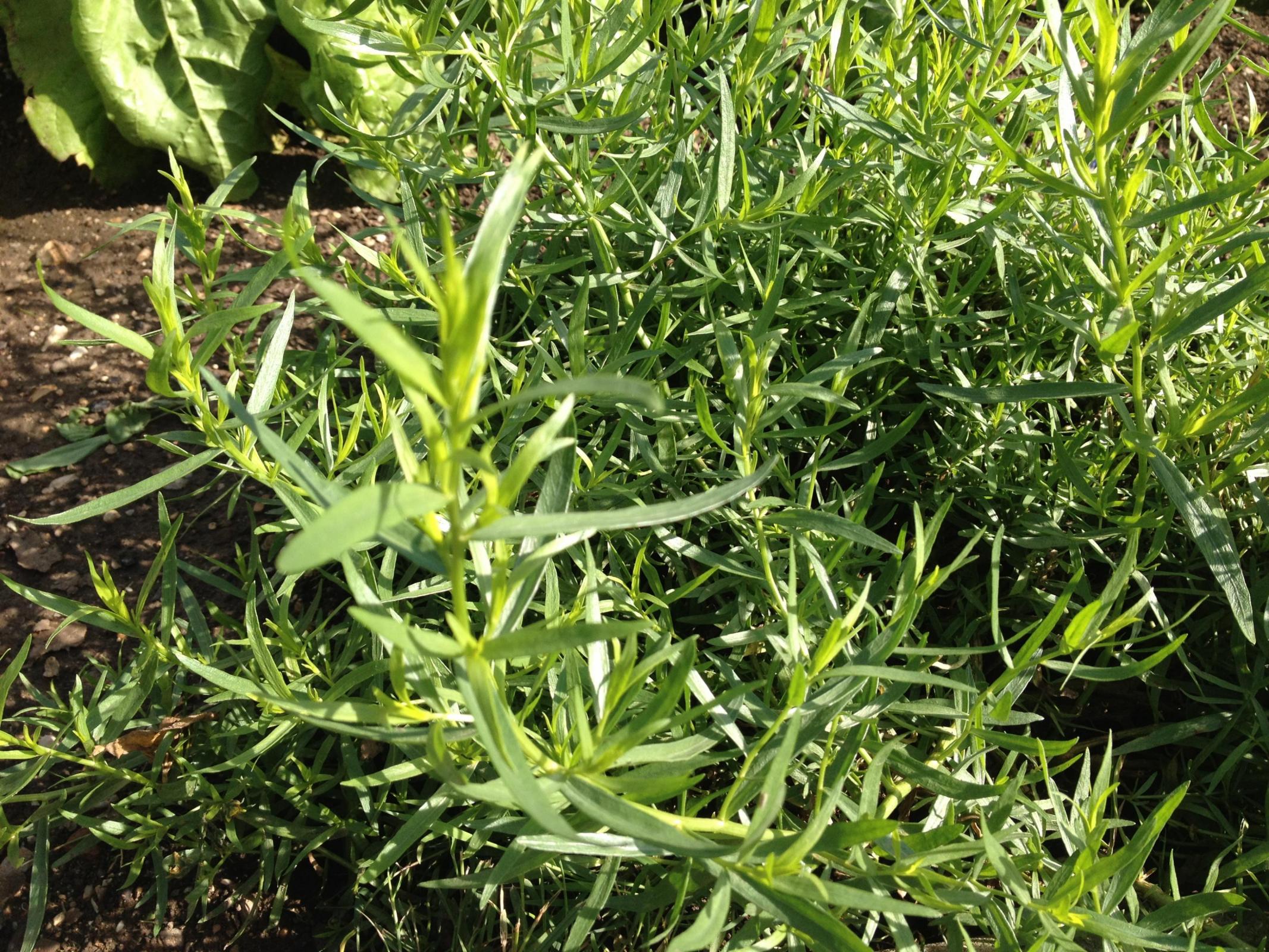
My wife likes cranberry jam and her birthday was just a perfect occasion to put my idea in practice. The dough recipe is following the idea for a Tartine County Loaf. The additions are dried but rehydrated cranberries, chopped fresh tarragon (one can also use dried tarragon) and 2 teaspoons of honey. I used fresh tarragon from our garden. If you don’t like sweet bread you can omit completely two teaspoons of honey.
The recipe calls for using milk but one can use water instead. However, be prepared that the taste in this case will be quite different.
Several hours before you start mixing the dough you should soak the cranberries in the water and dry them before you put them in the dough. However, soaking them in the water will cause that a lot of their juice will be dissolved in water so it is good to use the water from the soaker for mixing the dough. Alternatively what I do is soaking cranberries in milk which is used in the recipe and strain that milk away before mixing the dough. It might happen that the milk will coagulate a little bit due to the acid in the cranberries but when you add cranberries to the dough you will not notice this at all. If you are using milk then after straining add missing quantity of milk to have 200 grams of milk for mixing the dough. Sometimes cranberries can be quite thirsty and you have to correct this by adding more milk. One can also use re-hydrated cranberries. In this case there is no need for soaker.
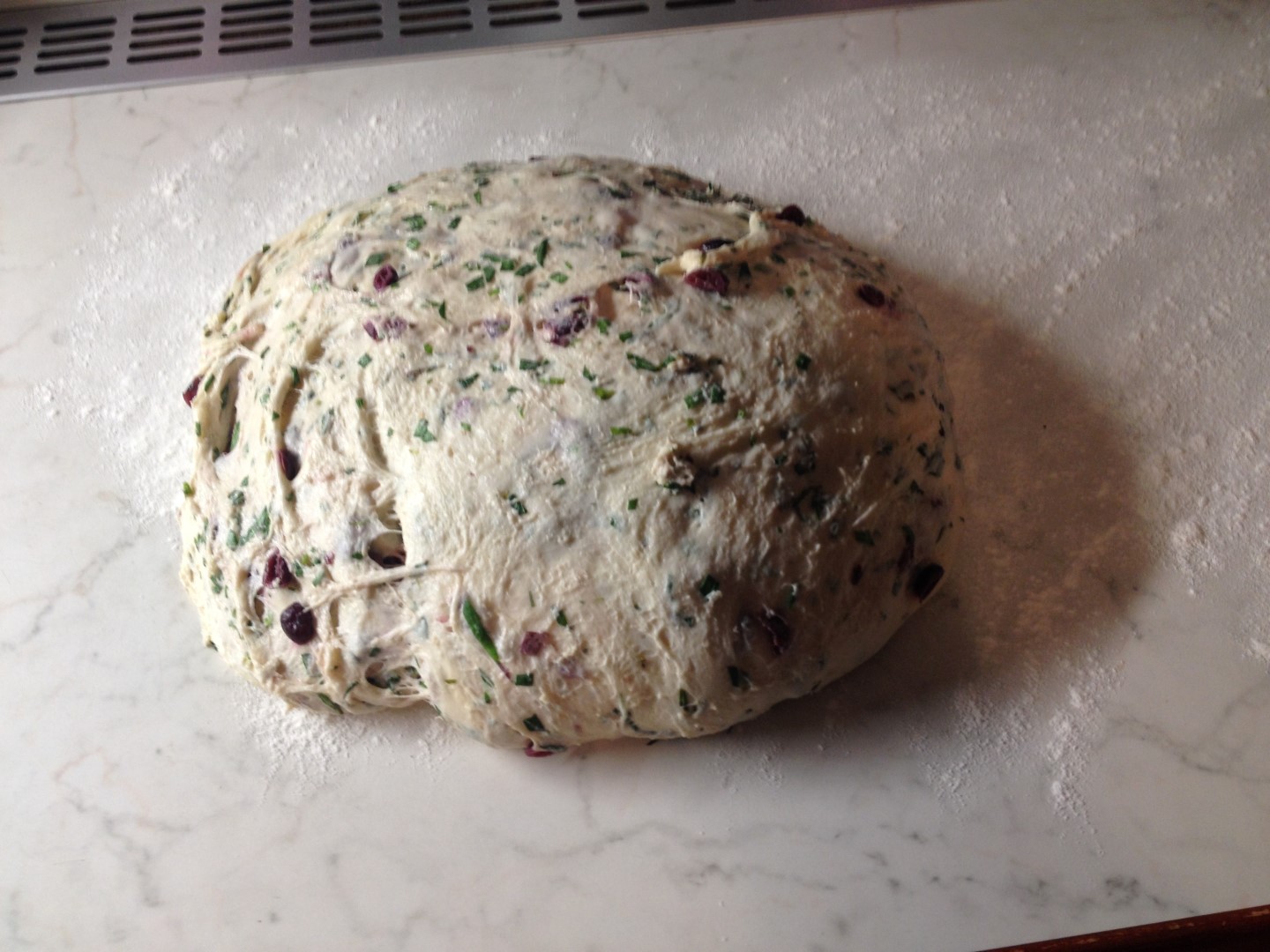
Cranberry Soaker | | |
Ingredient | Grams | Baker's % |
dried cranberries | 200 | 20% |
Milk/water | 200 | 20% |
Total soaker | 400 | |
| | | |
Levain | | |
Ingredient | Grams | Baker's % |
AP flour | 200 | 20% |
water | 200 | 20% |
SD culture (SD starter) | 50 | 5% |
Total levain | 450 | |
| | | |
| | | |
Final Dough | | |
Ingredient | Grams | Baker's % |
bread flour | 400 | 40% |
AP flour | 400 | 40% |
milk | 200 | 20% |
levain | 450 | 45% |
butter | 70 | 7% |
2 eggs | 130 | 13% |
salt | 20 | 2% |
honey | 20 | 2% |
tarragon fresh | 100 | 10% |
cranberry soaker | 400 | 40% |
Final dough weight | 2190 | 219% |
| | | |
Totals: | | |
Ingredient | Grams | Baker's % |
flour | 1000 | 100% |
milk/water | 730 | 73% |
hydration | 73,00% | |
Preparation:
1.) Mix with mixer 2 eggs, butter (leave it on room temp for a while to soften), honey, about 100g of the flour and some milk to get a thick batter. Then add strained milk from cranberries, levain, rest of milk/water and rest of flour and mix with hand to get a shaggy mass and let it rest from 20-60 minutes.
2.) Add 20 grams of salt and mix thoroughly with hand.
3.) Do stretch & fold every 30 minutes. Add cranberries and tarragon one hour into bulk fermentation (at second stretch & fold).
4.) After three to four hours of bulk fermentation (watch the dough, not the hour) divide the dough and let it rest for 15-30 minutes on the bench.
5.) Do final shaping and let it rise for about 2 hours or retard immediately and bake it direct from refrigerator after 8-12 hours.
6.) Bake in Dutch oven – for 10 minutes at 240 dC (460 dF) and then reduce to 220 dC (435 dF). Open the lid after 30 minutes and bake for another 10-20 minutes. Alternatively bake with steam for 15 minutes, after that continue with convection bake. CAUTION: As this dough contains more sugar it will brown faster so it is a good idea to reduce the baking temperatures for about 10-20 degrees.
7.) Cool on a rack for at least 1 hour before slicing.
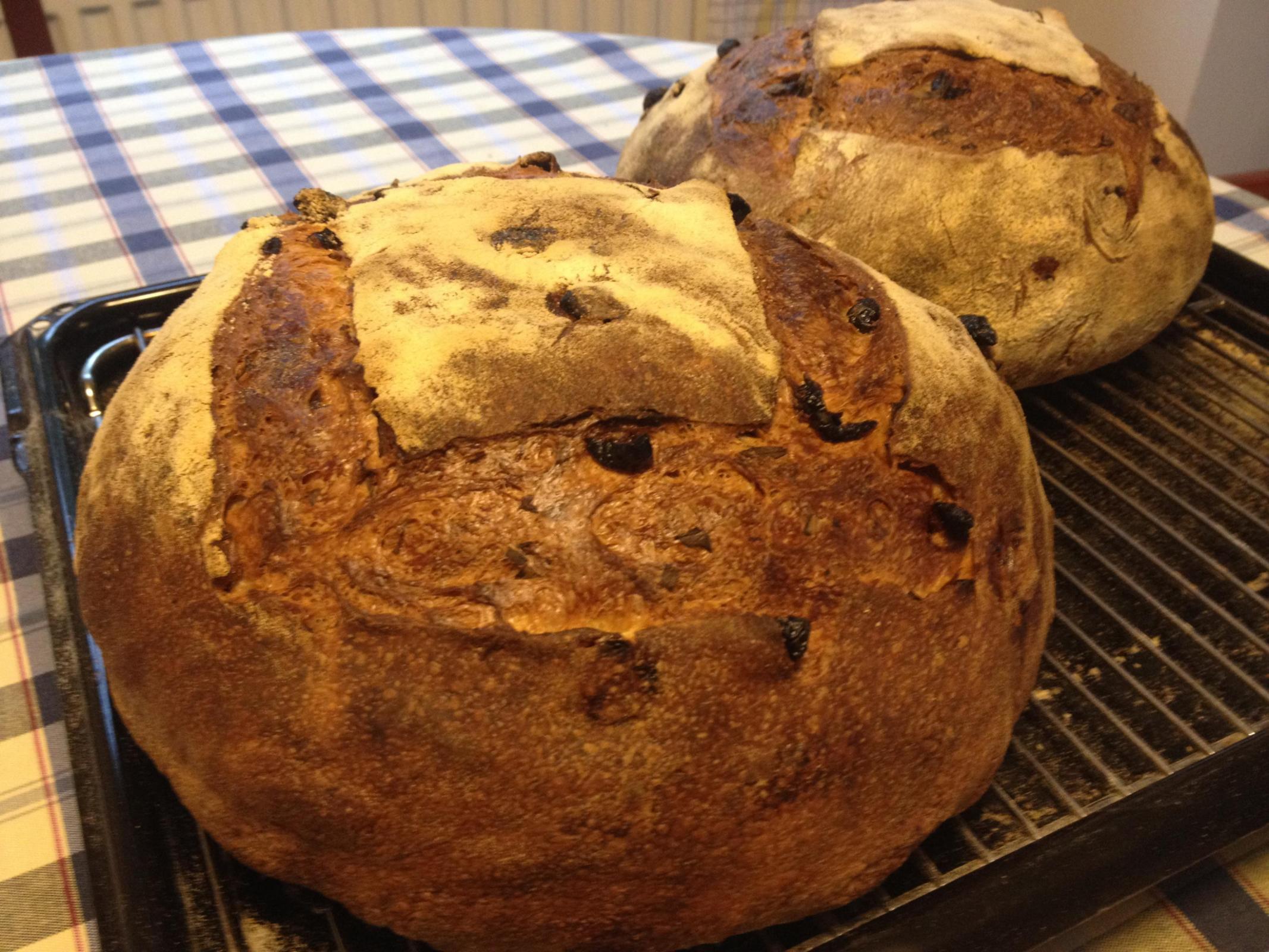
Taste of this bread is really great in if you like tarragon you will love this bread. One can use dry tarragon for the recipe as well; however in this case use only 30 grams of dry tarragon. Actually the quantity of tarragon in this bread is completely arbitrary and depends on your taste.
Update 4.8.2016
Today I was baking this bread for my mother who turned 91 and also for our neighbor who turned 61. I took several pictures which I am publishing now. My today's baking is with excellent Italian "00" flour.
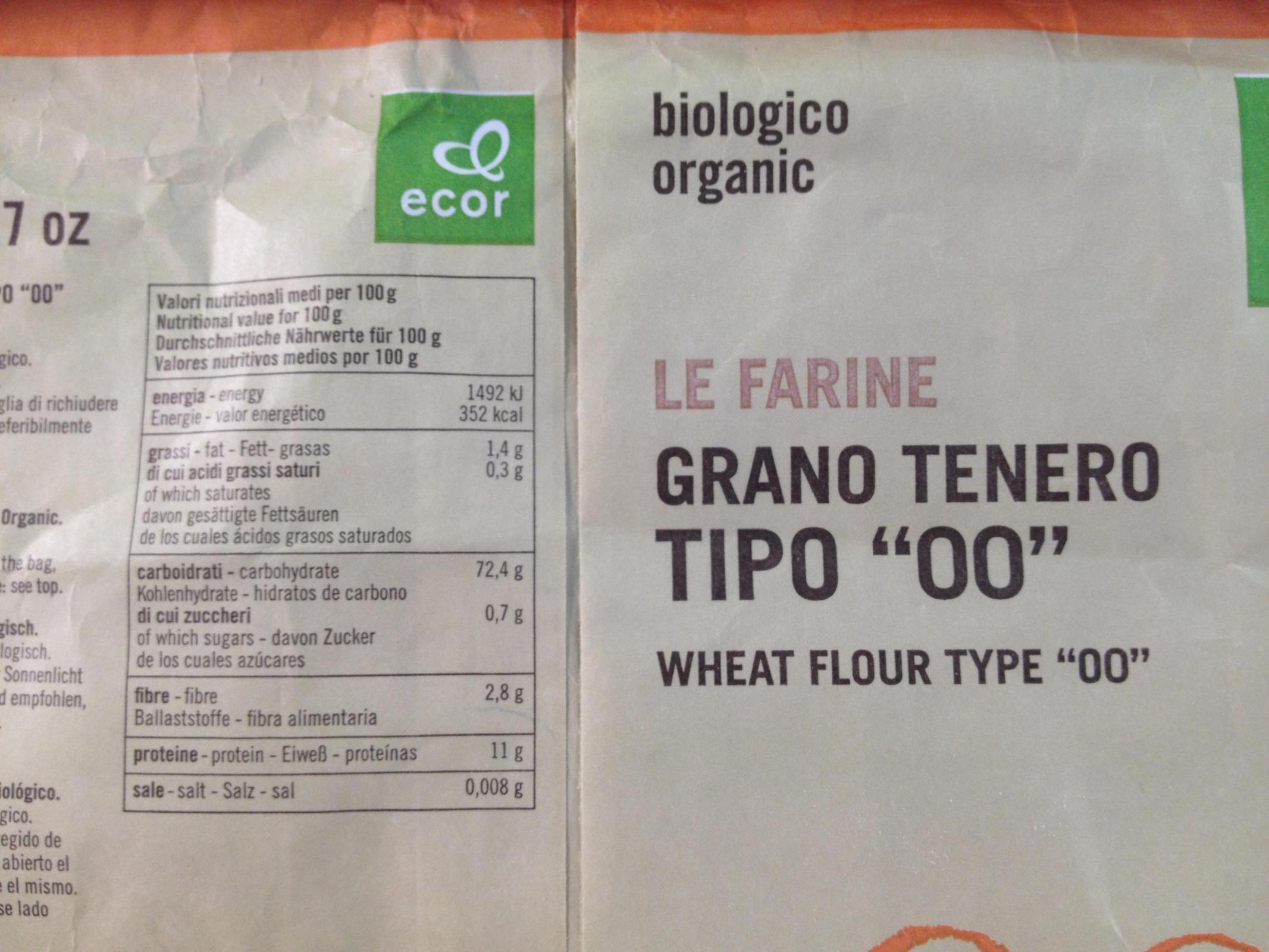
Italian flour type "00"
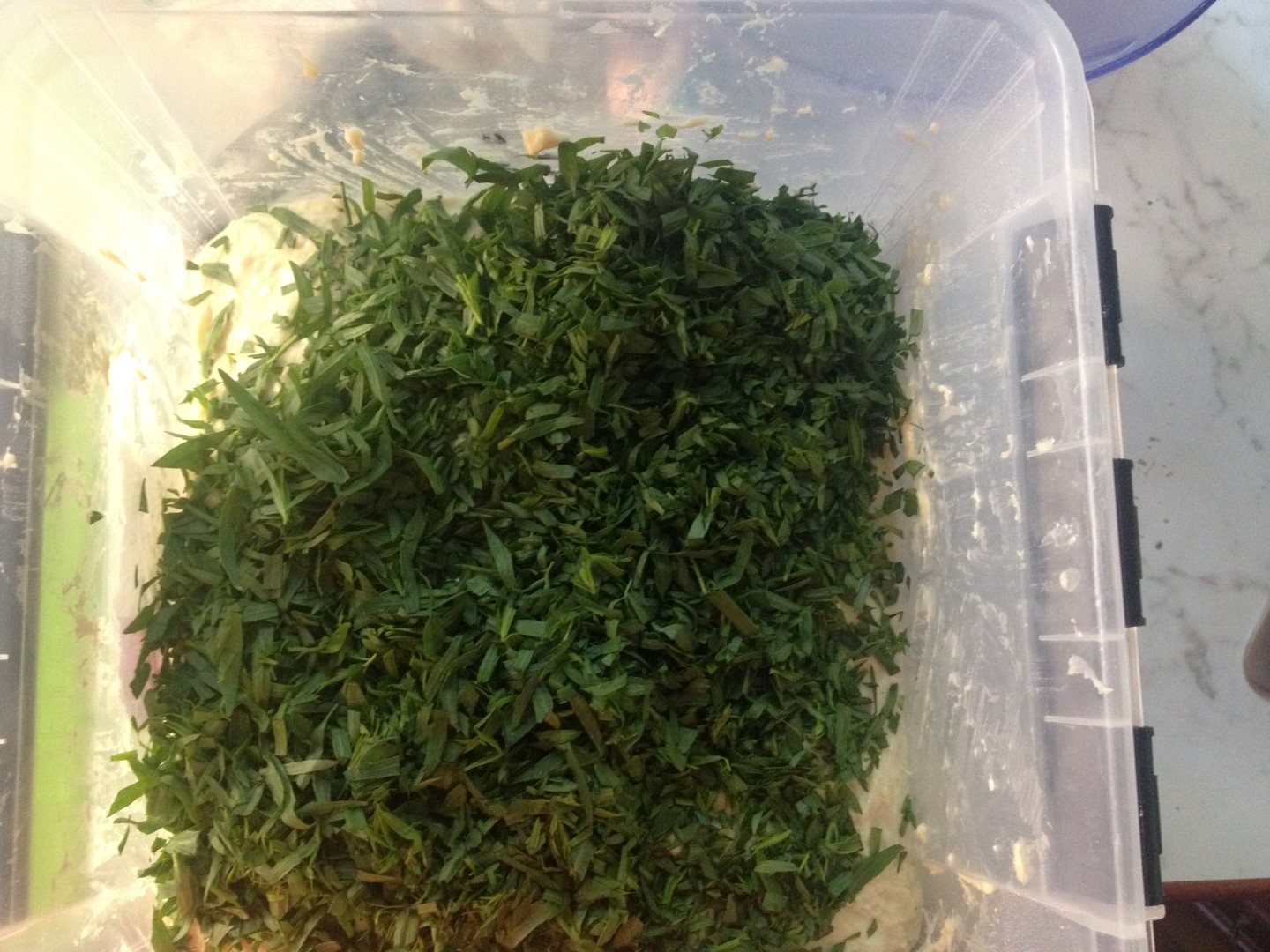
Adding tarragon to the dough
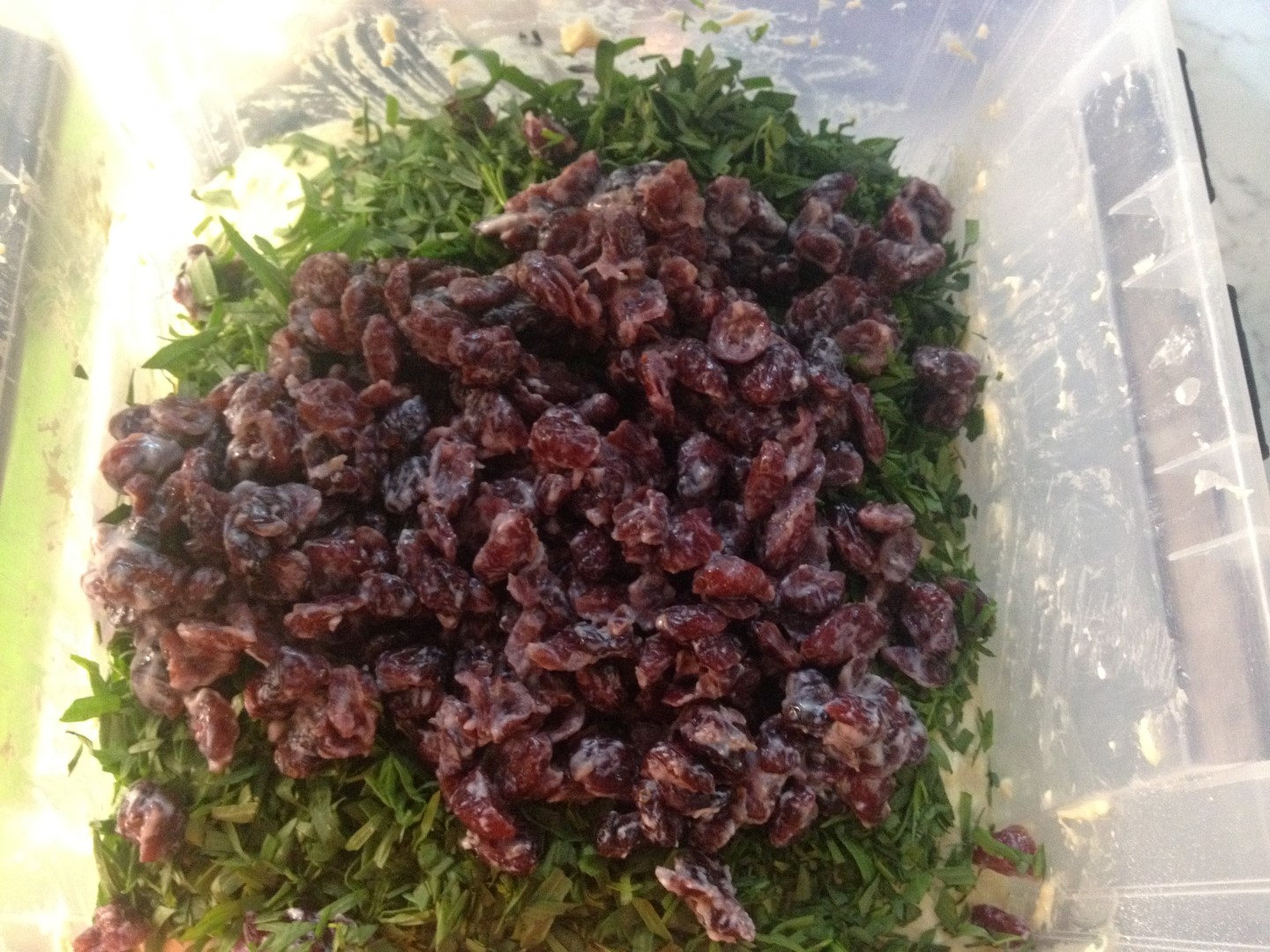
Adding cranberries soaked in milk (see some milk coagulation around berries)
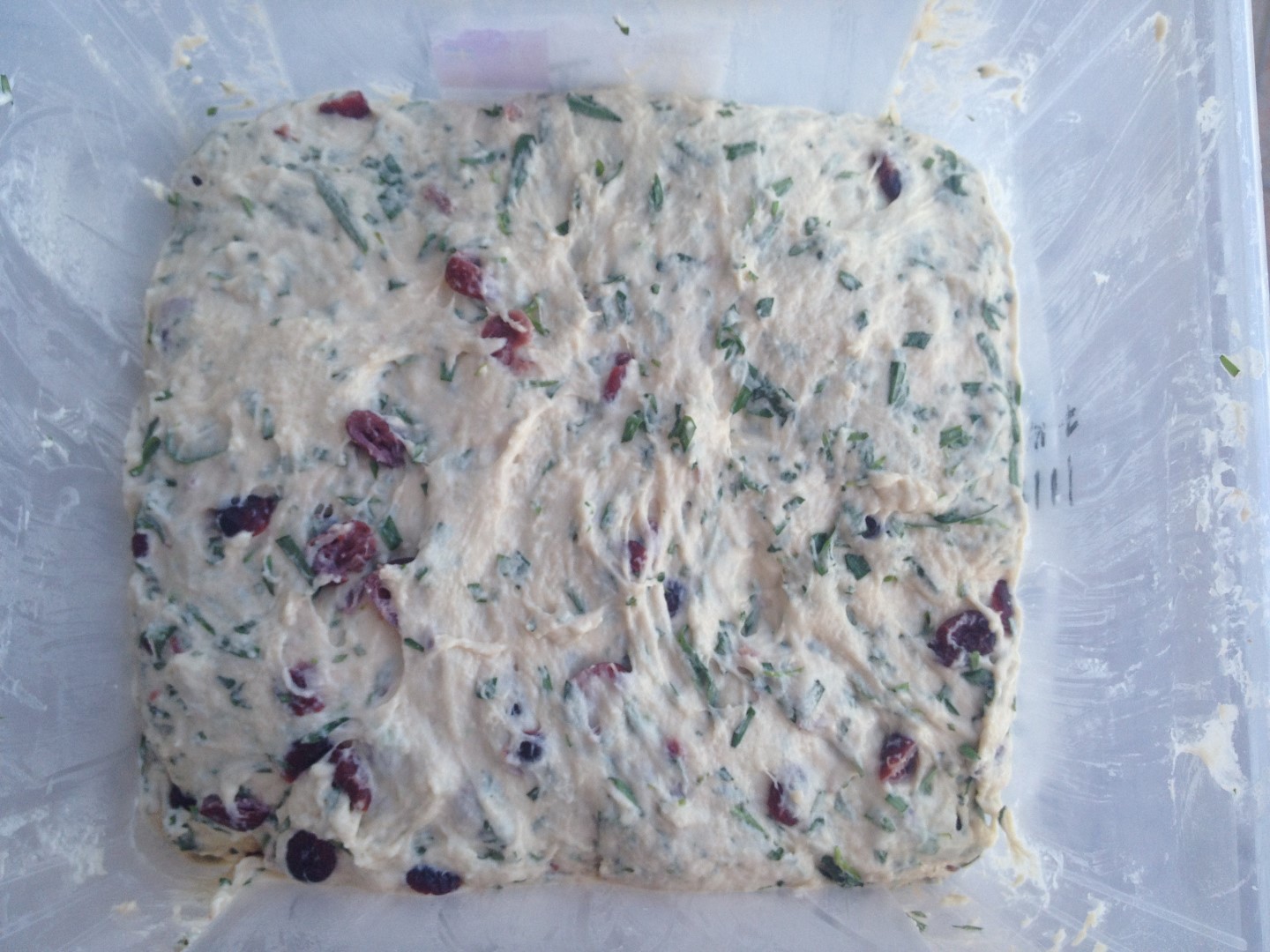
Dough with added tarragon and cranberries
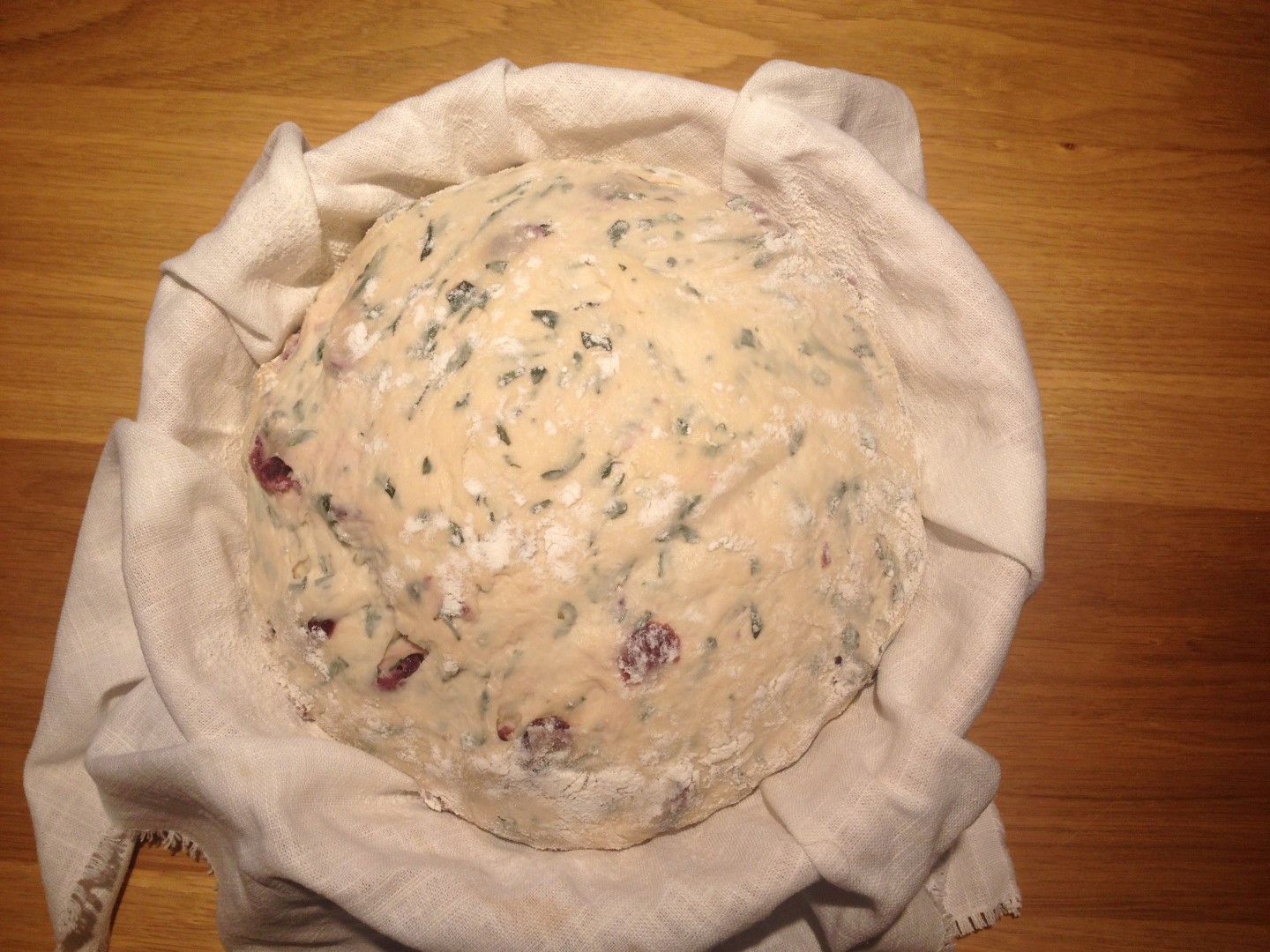
Dough after 8 hours in fridge before going into DO
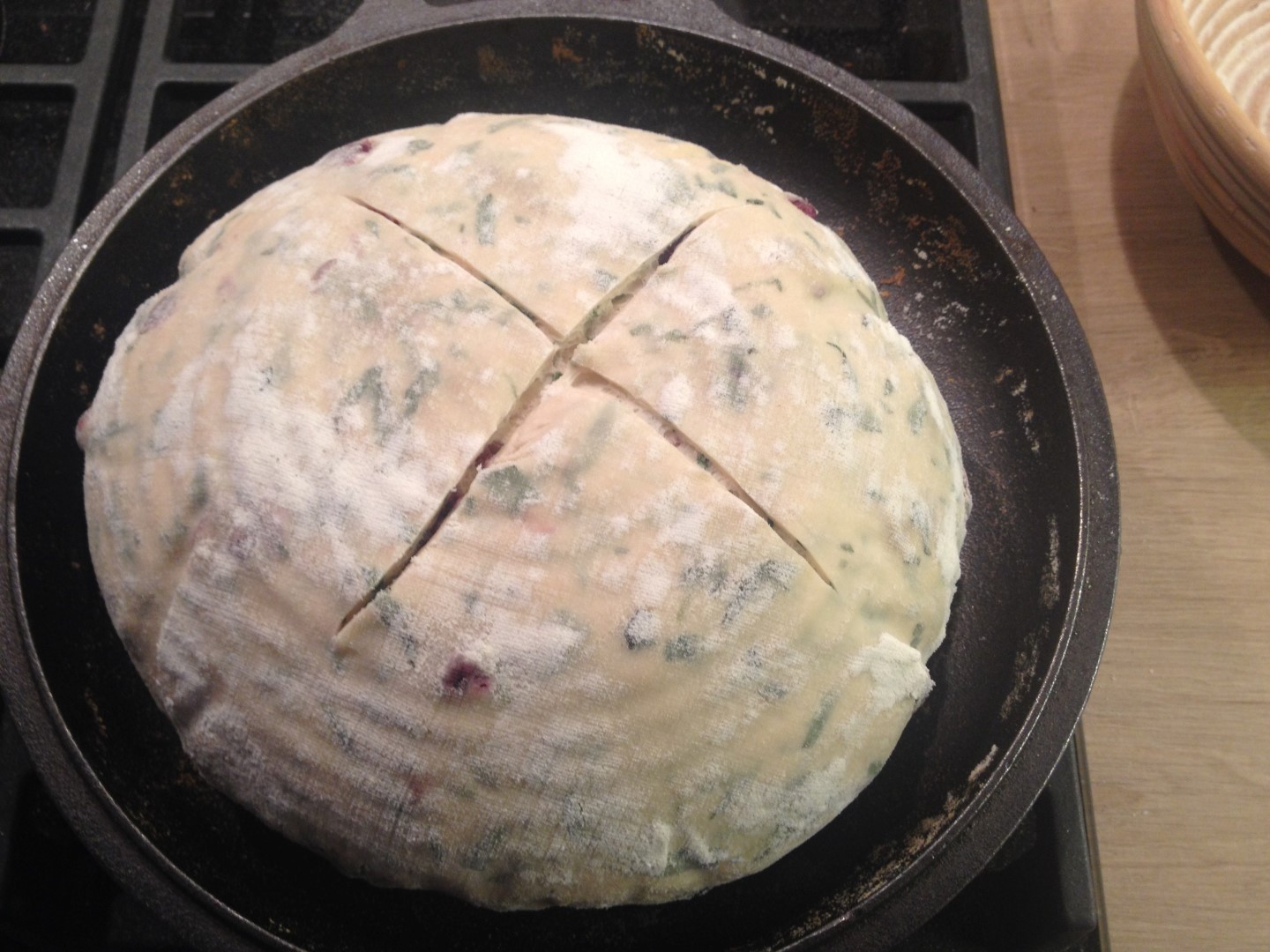
Scored dough in LODGE skillet
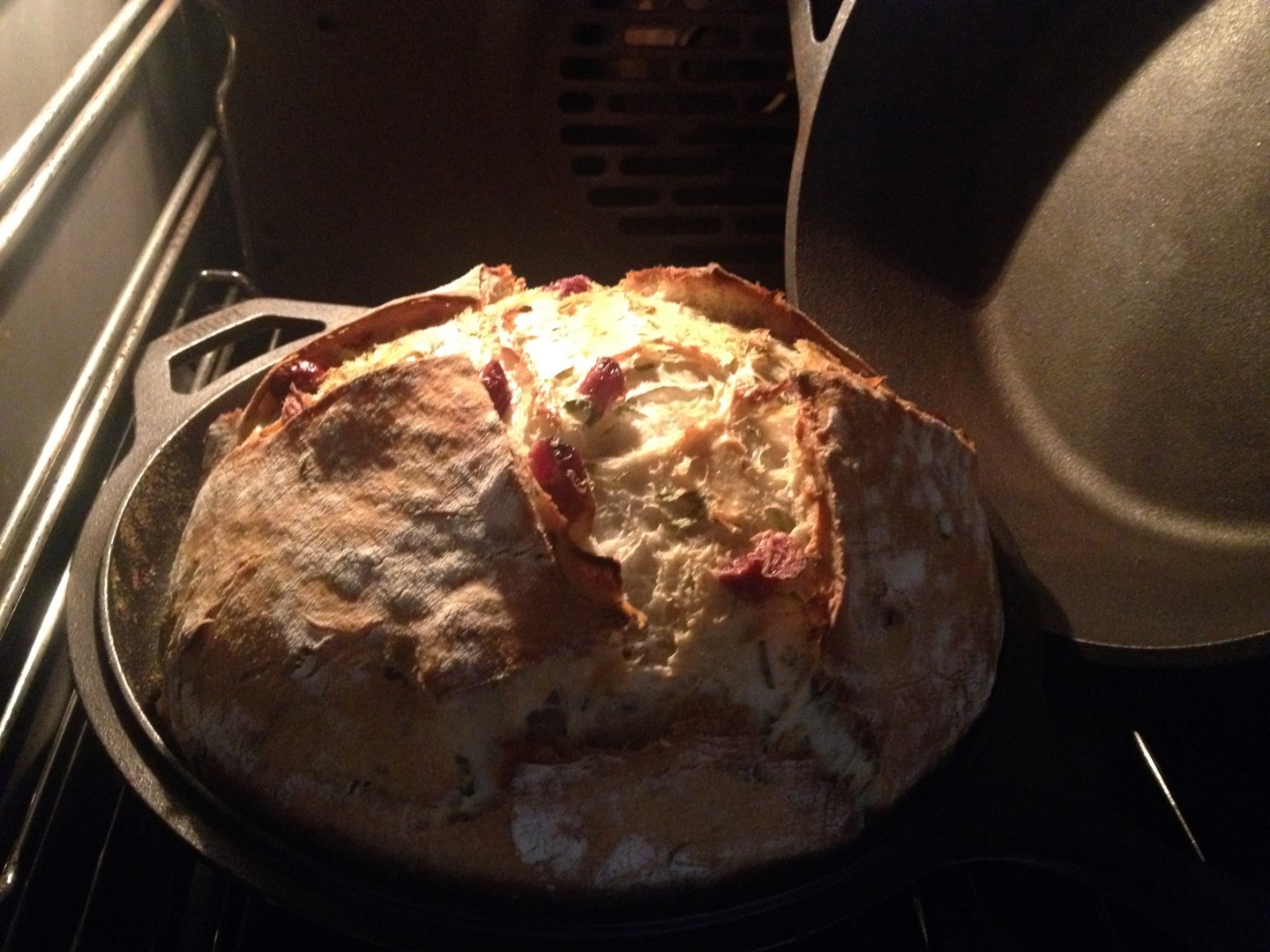
After removing lid 30 minutes later
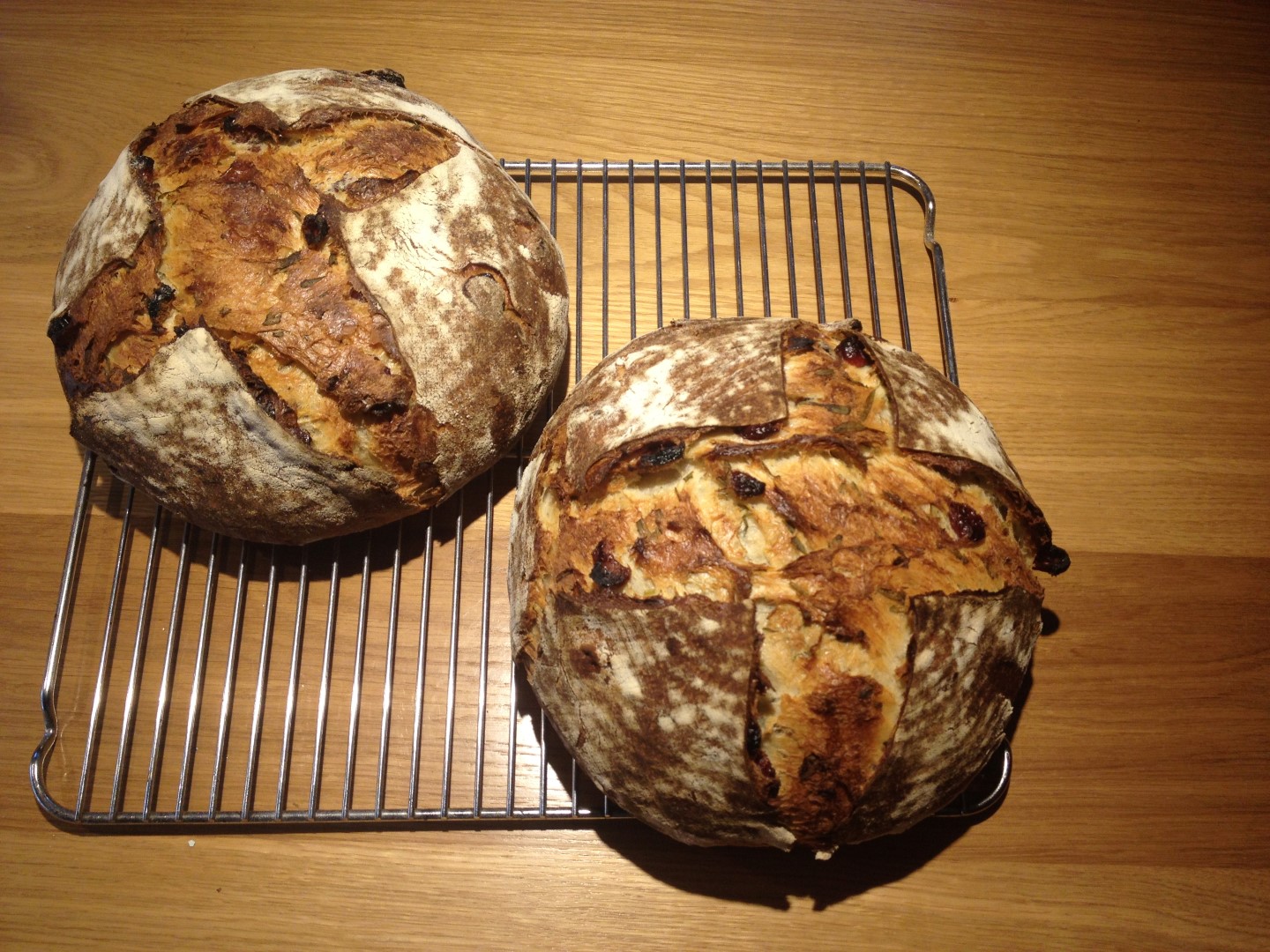
Final result
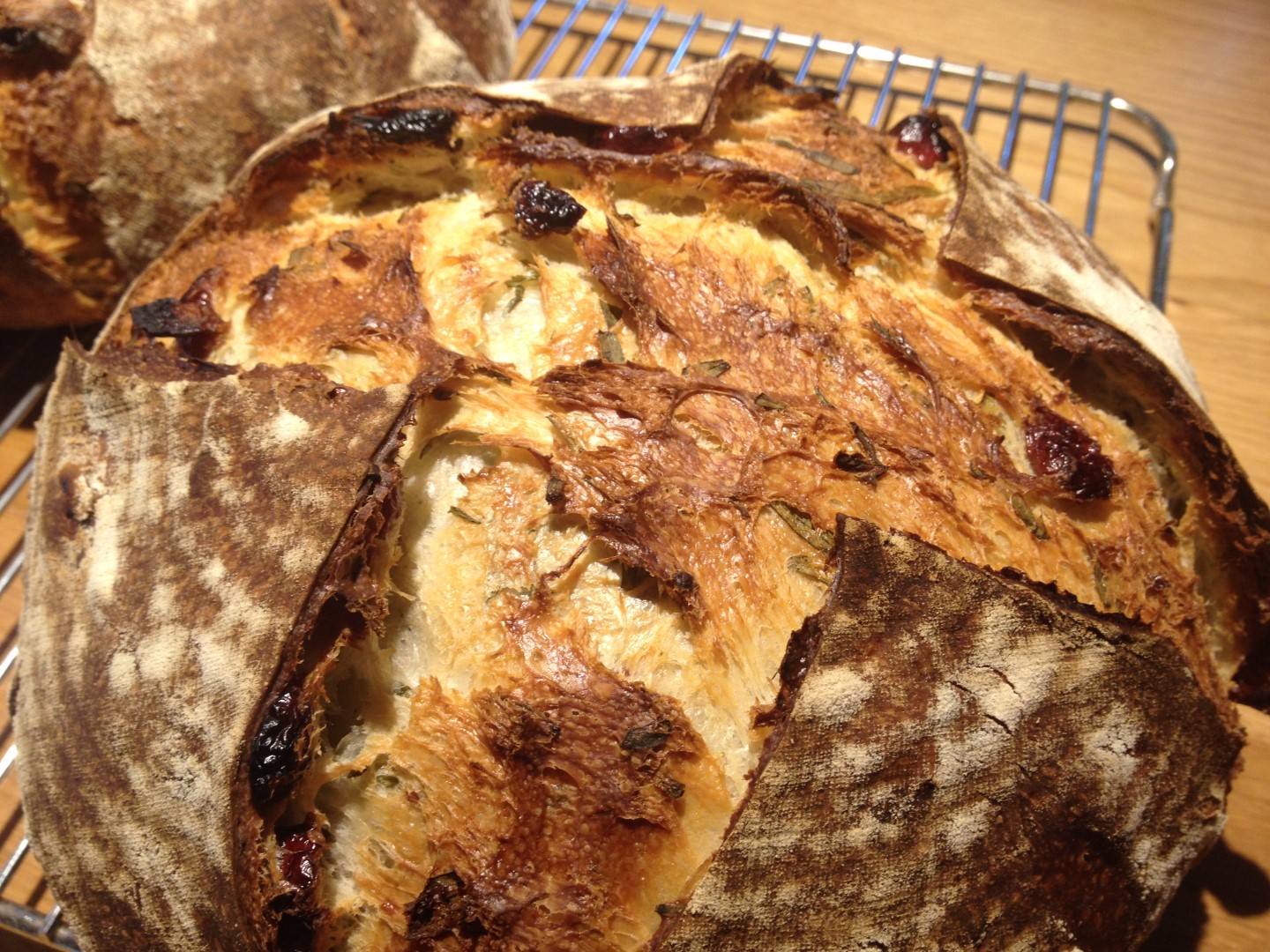
Final result - details
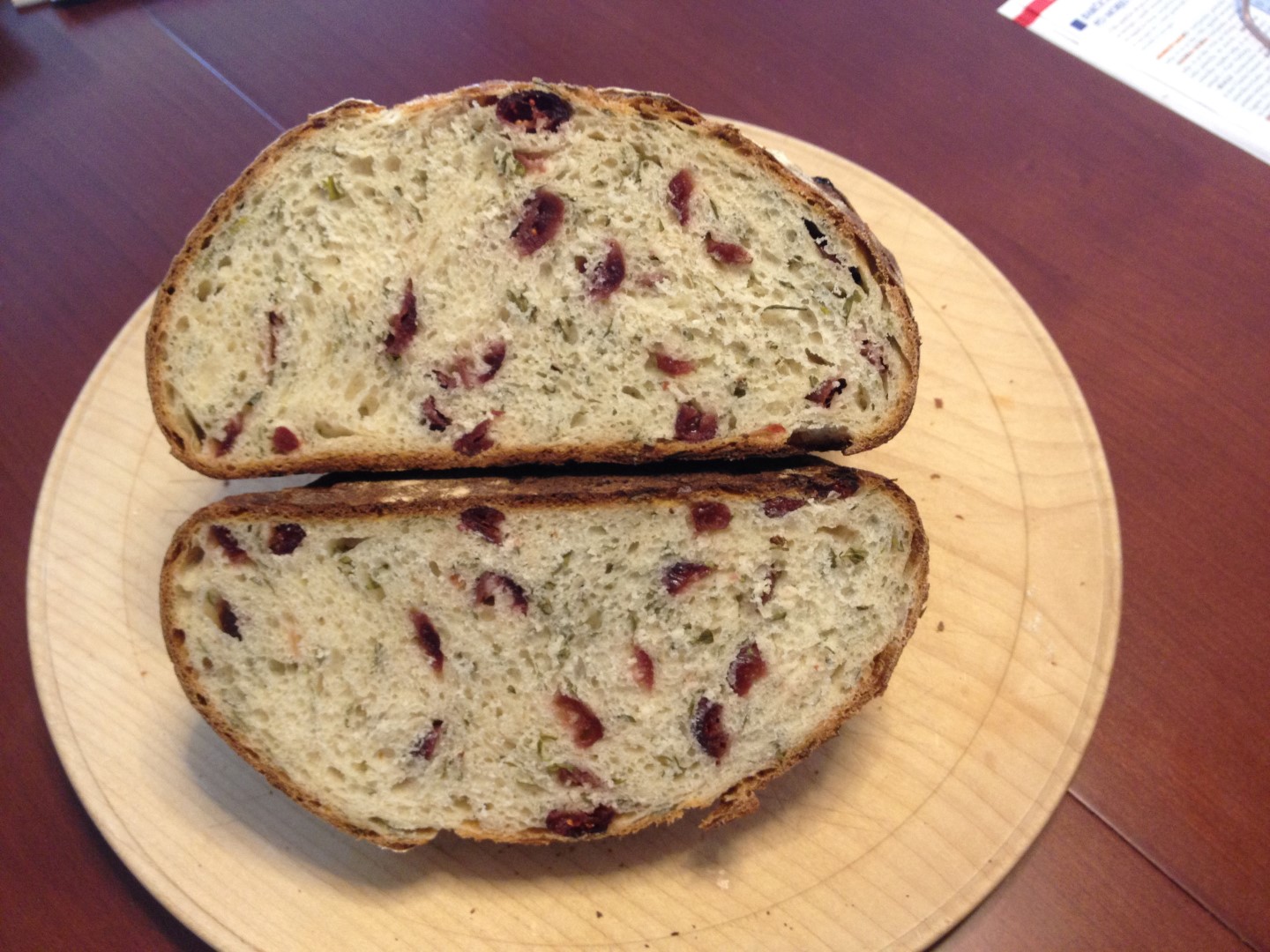
After slicing - crumb was very soft, not too open (this was my intention), the crust was not too strong. This bread amazes me every time I eat.
Happy baking!